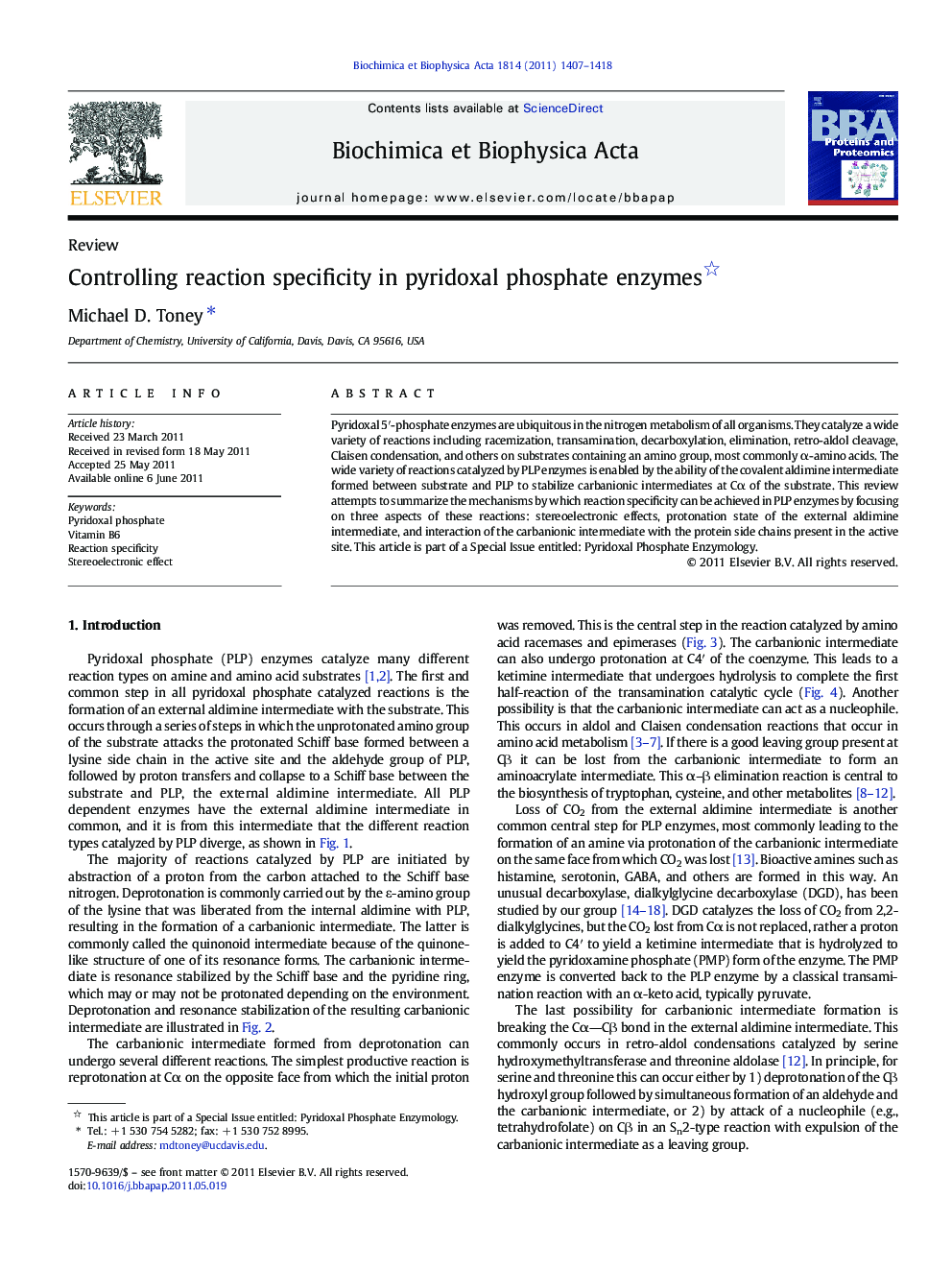| Article ID | Journal | Published Year | Pages | File Type |
|---|---|---|---|---|
| 1178004 | Biochimica et Biophysica Acta (BBA) - Proteins and Proteomics | 2011 | 12 Pages |
Pyridoxal 5′-phosphate enzymes are ubiquitous in the nitrogen metabolism of all organisms. They catalyze a wide variety of reactions including racemization, transamination, decarboxylation, elimination, retro-aldol cleavage, Claisen condensation, and others on substrates containing an amino group, most commonly α-amino acids. The wide variety of reactions catalyzed by PLP enzymes is enabled by the ability of the covalent aldimine intermediate formed between substrate and PLP to stabilize carbanionic intermediates at Cα of the substrate. This review attempts to summarize the mechanisms by which reaction specificity can be achieved in PLP enzymes by focusing on three aspects of these reactions: stereoelectronic effects, protonation state of the external aldimine intermediate, and interaction of the carbanionic intermediate with the protein side chains present in the active site. This article is part of a Special Issue entitled: Pyridoxal Phosphate Enzymology.
Research highlights► Stereoelectronic effects in controlling PLP enzyme reaction specificity are discussed. ► The role of various protonation states of the external aldimine intermediate in PLP enzymes is discussed with respect to reaction specificity. ► The role of active site side chains in determining reaction specificity in PLP enzymes is reviewed.
